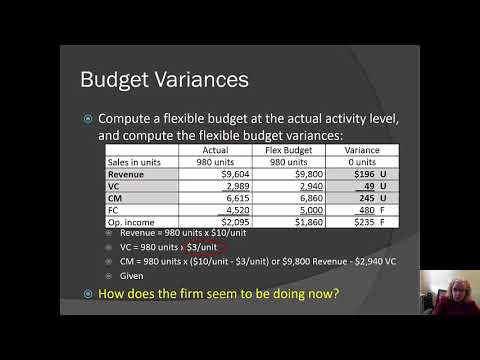9.12: Shortcomings of Static Budgets
- Page ID
- 45924
Learning Objectives
- Describe the shortcomings of a static budget
Your supervisor walks into your office and looks very upset. “John, why are our electric bills 50% higher than we have budgeted in our manufacturing overhead budget?” You take a look at that portion of the master budget, and notice a problem. The sales budget was for 50,000 units to be produced, but you have now produced 85,000 units. The electric service, since the machinery to create your product has been running almost twice as many hours per day as originally budgeted, is higher. It is your job to explain this budget variance to your supervisor!
One of the biggest pitfalls to a static budget, is the inability to adjust for changes to sales levels. So here is an example:
Jake is the sales manager at a large computer store. His salespeople are paid 10% of their sales as a commission. Jake, using information from the previous year, is asked to prepare his budget. His static budget looks like this:
| Sales | $10,000,000 |
|---|---|
| Sales Commissions | $1,000,000 |
Jake is pretty excited about the year ahead, and submits this budget to his supervisor. In the end of his budget year, Jake takes a look at his numbers, and is thrilled to see sales of $20,000,000! His sales are double what he anticipated. But, he also sees commissions of $2,000,000, which are double what his static budget numbers were. He sees a big UNFAVORABLE next to this number.
Where do you see the problem here? Because the master budget as prepared was a static budget, it can’t be adjusted later for increases or decreases in sales numbers. This is a huge problem, since additional sales is typically a good thing. Preparing a flexible budget, which adjusts based on changes in sales, would have helped Jake to see the true picture here. If his sales doubled, it only makes sense that his commissions would double as well.
So now that we know the limitations of a static budget, let’s work on flexible budgets.
Practice Questions
- Shortcomings of Static Budgets. Authored by: Freedom Learning Group. Provided by: Lumen Learning. License: CC BY: Attribution
- Static Budget vs Flexible Budget. Authored by: Rutgers Accounting Web. Located at: https://youtu.be/ayAGukL7rzo. License: All Rights Reserved. License Terms: Standard YouTube License


